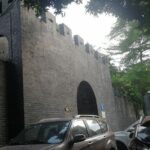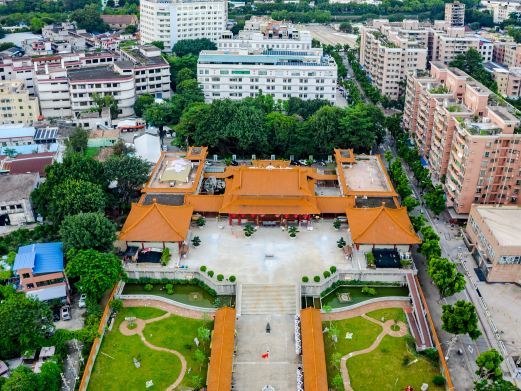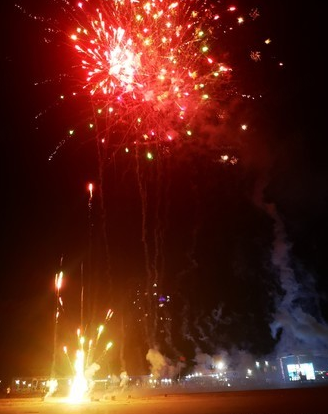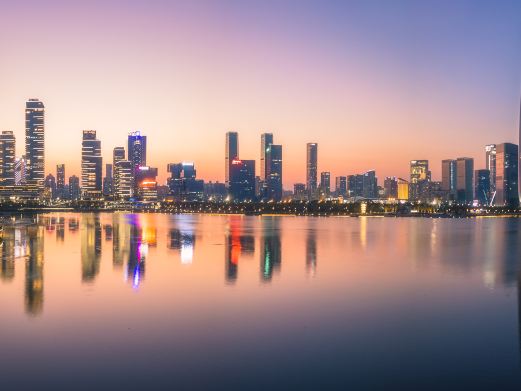The Changting Ancient City Wall boasts a unique structure and design, colloquially known as ‘Blue Robe with Beads’, which signifies its resemblance to a beautiful string of Buddhist beads draped around Changting City, creating a picturesque landscape.
Changting places great emphasis on the preservation of the ancient city wall. In the 1990s, partial repairs were conducted, and further restorations have been carried out recently. The wall was originally built in the fourth year of the Dali era of the Tang Dynasty, which corresponds to 769 AD. It has been expanded over the dynasties due to the expansion of the city. The current city wall is reconstructed based on the Ming Dynasty ruins. The wall is situated on the sunny side of Wolong Mountain, stretching southward along the mountainside, bordering the Ting River; to the west, it follows the mountainside through Xiwai Street and Xigaoping, extending south to Luofang, encircling the entire city. From the vantage point of Wolong Mountain’s summit, the ancient city wall truly resembles a ‘Blue Robe with Beads’, a sight of unparalleled beauty. The ancient city wall once had four major gates. Chaotian Gate, one of the four gates of Tingzhou Prefecture, commonly known as the East Gate and originally named Xingxian Gate, was renovated in the fourth year of the Hongwu era of the Ming Dynasty, built with bricks and stones, featuring a gate tower that was both sturdy and tall, with a commanding presence, hence renamed Chaotian Gate. In the Qing Dynasty, Tingzhou Prefecture Governor Yan Yiming conducted another renovation, and the gate tower’s main structure was built upon a high platform above the city gate, with layers of eaves flying into the sky, making it one of the famous scenic spots of Ting City, known as ‘East Qiao Shu Xiao’. Situated on Nanda Street, the Baozhu Gate, facing the southern Pearl Peak, was named after the jade beads and is commonly referred to as the ‘Pearl Tower’. It was repaired in the tenth year of the Chongzhen era of the Ming Dynasty, divided into inner and outer layers, making it a rather unique ancient city gate, which is still well-preserved to this day. On the west side of Shuidong Bridge, there was once a sturdy city gate, originally named Huichuan Gate. According to records, in the 40th year of the Jiajing era of the Ming Dynasty, Prefect Yang Shifang led the county magistrate Wang Miao to supervise the construction of the gate tower, renaming it Yiqing Gate. When the Qing troops entered Fujian, Emperor Longwu and his entourage, along with the imperial concubines, fled to Changting, and the city was put on high alert, with the city gates tightly closed. Many people volunteered to guard the city walls. The Qing troops set fire to Yiqing Gate, and the defenders died in battle on the gate tower. Later, the gate tower was demolished for road expansion, but the locals still refer to the area at the west end of Shuidong Bridge as ‘Yiqing Gate Head’. The Sanyuan Pavilion gate tower is one of the older city gates, originally named Yinjiang Gate, later changed to Guangchu Gate. It was the city gate during the construction of the earthen city by Tingzhou Governor Chen Jian during the Dali era of the Tang Dynasty. It has been renovated over the generations, with a three-story gate tower in the Qing Dynasty. The pavilion base is the original ancient city gate, built with square stone slabs, and above it, the city wall bricks are used to form an imposing structure with upturned eaves and corners. Throughout the dynasties, the ancient city wall has been continuously renovated and expanded, with many city gates added, such as the Ancient Prefecture South Gate, Wutong Gate, Shuiji Gate, West Gate, etc. Some were later demolished during road expansions, while others remain and have become historical sites, listed as county-level cultural relics for protection. The opening hours are all year round, open all day.Changting Ancient City Wall
The Changting Ancient City Wall boasts a unique structure and design, colloquially known as ‘B[...]









